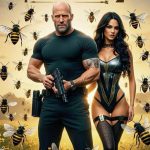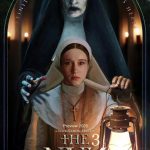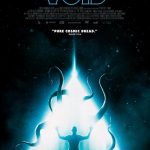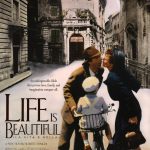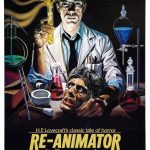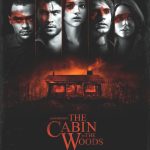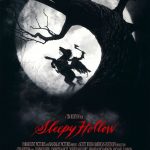Brotherhood of the Wolf (2001)
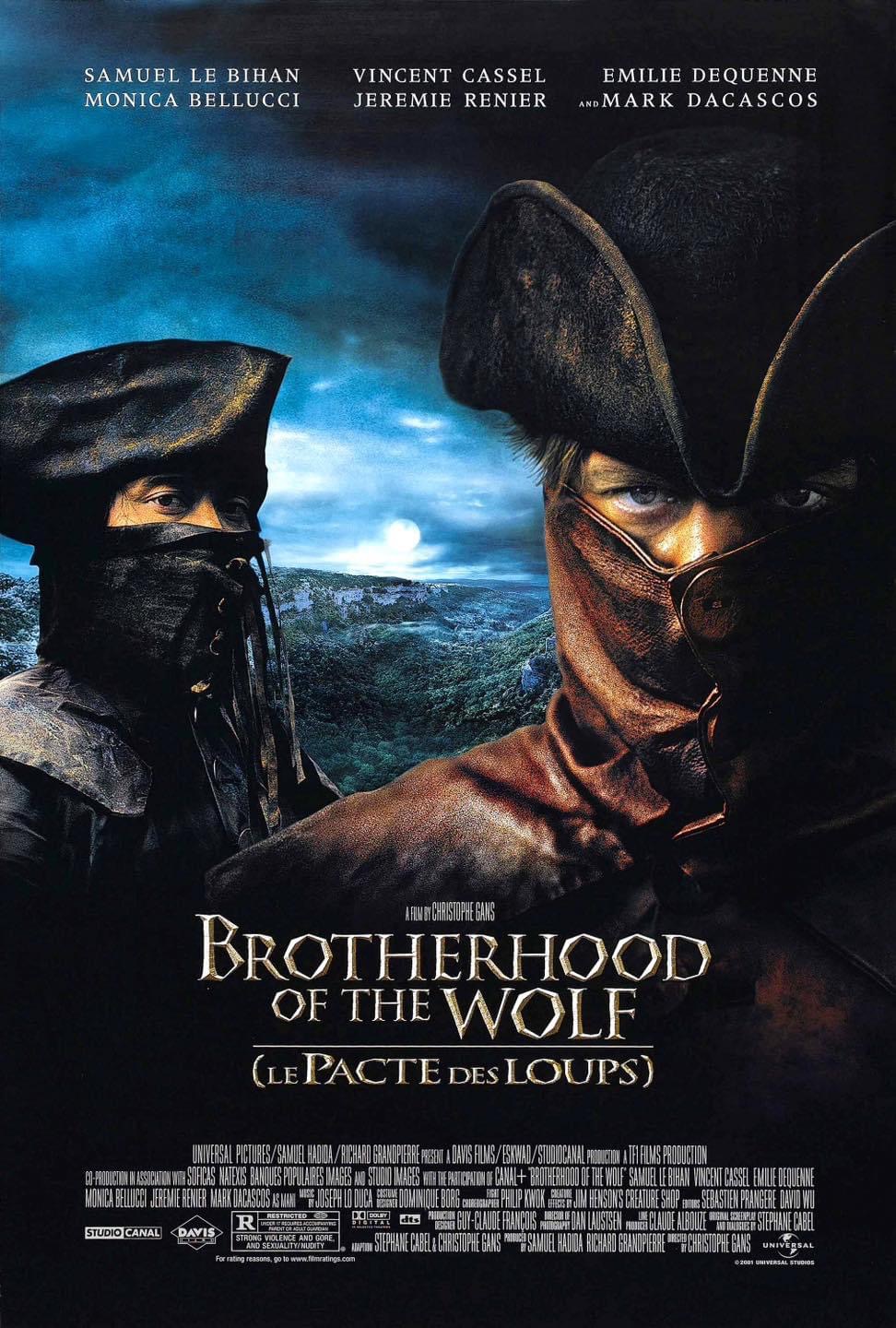
Brotherhood of the Wolf (2001) Review: A Genre-Bending Cult Classic
Brotherhood of the Wolf (Le Pacte des loups), directed by Christophe Gans, is a unique cinematic experience that defies easy classification. Set in 18th-century France, the film blends historical drama, horror, martial arts, and political intrigue, while telling the story of the legendary Beast of Gévaudan, a creature that terrorized the French countryside. With its ambitious genre mix, stunning visuals, and captivating performances, Brotherhood of the Wolf has gained a well-deserved cult following.
Suggested videos for you:
Plot Overview
Set in 1765 during the reign of King Louis XV, the film follows Grégoire de Fronsac (Samuel Le Bihan), a naturalist and knight sent by the King to investigate a series of brutal killings in the province of Gévaudan. Accompanying him is his companion Mani (Mark Dacascos), a Native American with exceptional combat skills and a mysterious spiritual connection to nature.
As the two investigate, they uncover not just a deadly creature, but a deeper conspiracy involving local nobility and political factions. Fronsac must navigate through superstition, secrecy, and power struggles to solve the mystery of the Beast, encountering key figures like the aristocratic Marianne de Morangias (Émilie Dequenne), her troubled brother Jean-François (Vincent Cassel), and the enigmatic courtesan Sylvia (Monica Bellucci).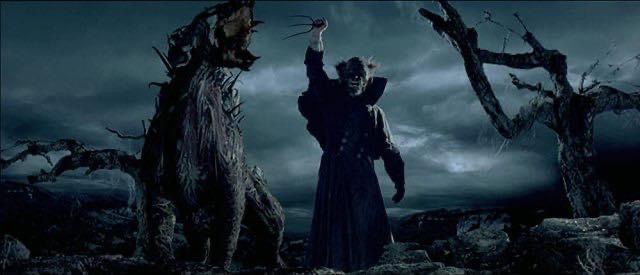
Genre Fusion and Visual Style
One of Brotherhood of the Wolf’s greatest strengths is its daring fusion of genres. What begins as a period drama quickly evolves into a creature feature, complete with horror and supernatural overtones. Yet the film doesn’t stop there—elements of martial arts cinema are woven into the fabric of the story, particularly through Mani’s stunningly choreographed fight scenes. These sequences, designed by Hong Kong stunt coordinator Philip Kwok, are a surprising yet thrilling addition to what might otherwise have been a conventional historical film.
The cinematography by Dan Laustsen is another highlight. The misty, rain-soaked landscapes of rural France are captured with a gothic beauty that gives the film a dark, atmospheric feel. The film’s rich period detail, from costumes to set design, grounds it in its historical setting, while its modern action sensibilities and intense fight sequences inject a fresh energy.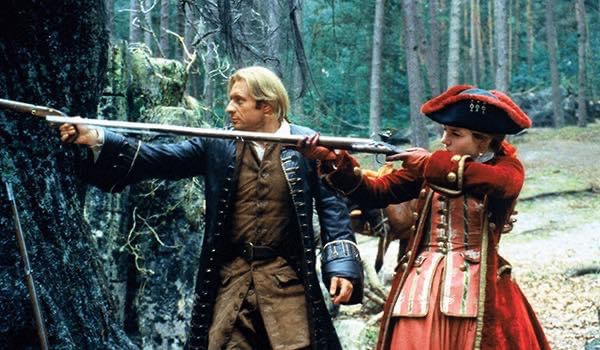
Performances and Characters
Samuel Le Bihan as Grégoire de Fronsac is a strong lead, portraying a man of reason and science thrust into a world ruled by superstition. His chemistry with Mark Dacascos’ Mani adds depth to the film. Mani is one of the film’s standout characters—Dacascos gives a quietly commanding performance, and his martial arts skills make him a force to be reckoned with in the film’s many action sequences. Mani’s character, a Native American in 18th-century France, also brings in themes of otherness and prejudice, providing a nuanced counterpoint to the European characters.
Vincent Cassel, as Jean-François, brings his usual intensity, imbuing the character with a brooding menace. Monica Bellucci’s role as Sylvia, while initially mysterious, becomes a key part of the political intrigue, and Bellucci plays the role with a mixture of seduction and danger that keeps her character unpredictable.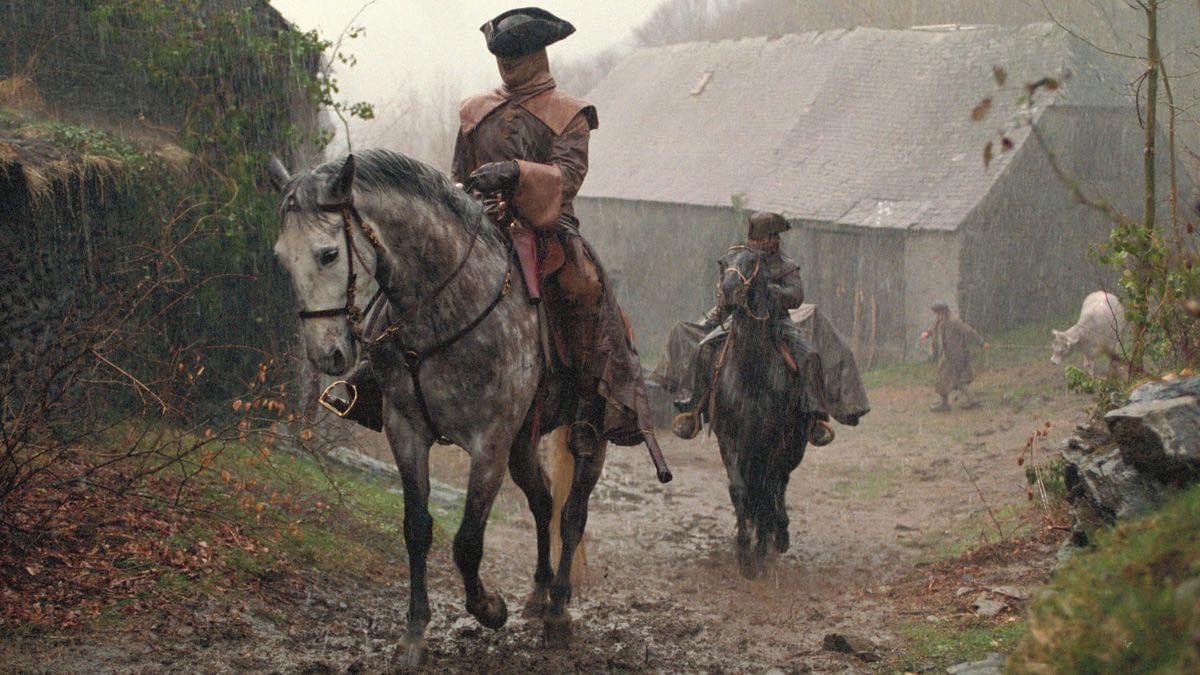
Creature Design and Effects
The Beast of Gévaudan, a key focus of the plot, is realized through a mix of practical effects and CGI. For a film released in 2001, the creature design holds up relatively well, with the animatronics adding a tangible, menacing presence. While the CGI may not fully meet modern standards, the film uses the Beast sparingly, keeping much of its terror implied, which works to maintain a sense of mystery and dread.
The film takes the legend of the Beast and turns it into something more—a manifestation of the darker impulses of humanity, rather than just a wild animal. This twist elevates the film beyond a simple monster movie, giving the story political and philosophical dimensions.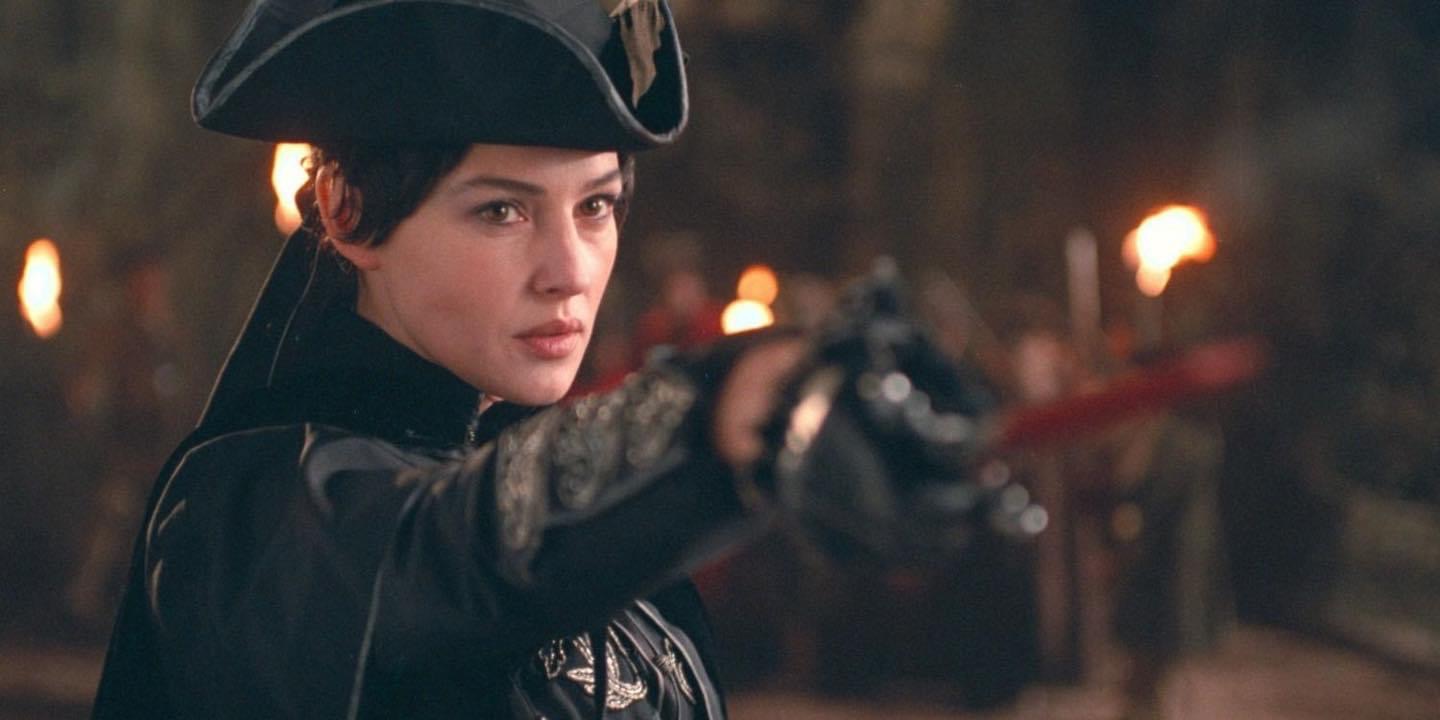
Themes and Subtext
Beneath its action and horror, Brotherhood of the Wolf is layered with themes of power, corruption, and societal decay. The film subtly critiques the aristocracy of 18th-century France, showing how the ruling class exploits fear and violence to maintain control. The Beast becomes a symbol of this corruption, with its existence tied to a sinister conspiracy. This political undercurrent gives the film depth, making it as much about the conflict between science and superstition as it is about the hunt for a mythical creature.
Mani’s character also brings in themes of colonialism and the clash between civilizations. His role as a Native American in Europe, with his spiritual connection to nature and his outsider status, contrasts sharply with the European characters who are driven by power and greed.
Final Verdict
Brotherhood of the Wolf is a bold, exhilarating film that stands out for its daring mix of genres and its stylish direction. With strong performances, particularly from Mark Dacascos and Vincent Cassel, and a compelling plot that combines mystery, action, and political intrigue, the film offers something for everyone. Its unique blend of historical drama, horror, martial arts, and supernatural elements makes it a cult classic, appealing to fans of all these genres.
Though its tonal shifts and genre-blending may not be for everyone, those who embrace its audacity will find Brotherhood of the Wolf to be an unforgettable cinematic experience. Its combination of thrilling action, gothic atmosphere, and layered storytelling has ensured its place as one of the most distinctive films of the early 2000s
